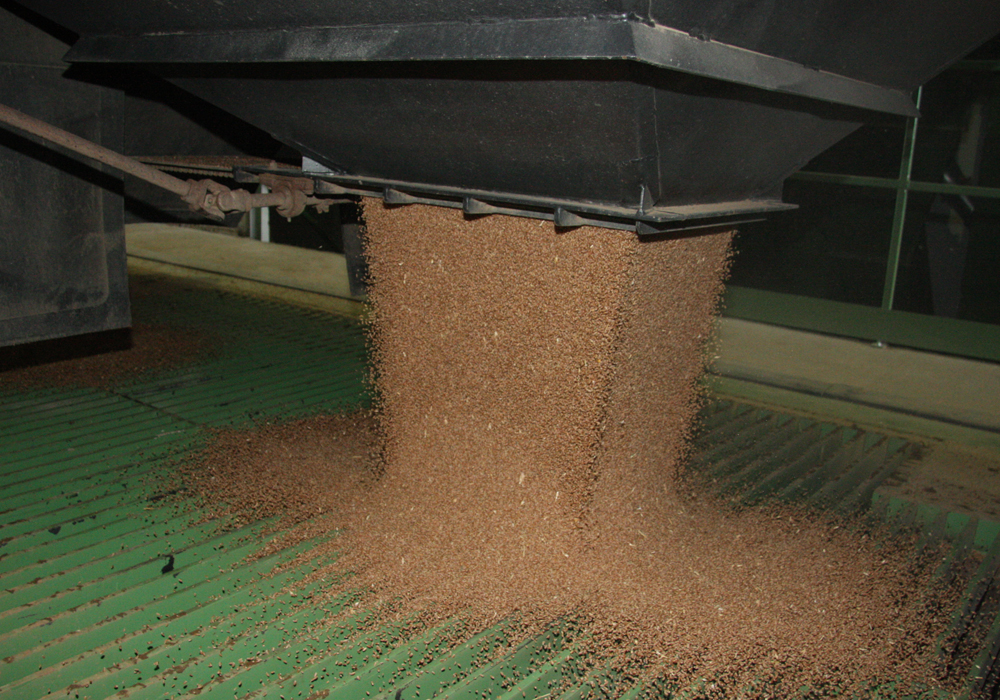In past years following a wet harvest, grain elevators may have downgraded wheat deliveries because of mildew damage.
Now, that’s less of a risk. In mid-May the Canadian Grain Commission altered its standard samples for mildew damage because research has shown that mildew has minimal impact on the functionality of wheat.
Grain elevators and grain laboratories use standard samples provided by the grain commission to visually compare that standard to a submitted sample of grain.
“The amount of mildew that was in our existing standards, the research has shown that those standards could have significantly more mildew in them… than they currently have,” said Derek Bunkowsky, chief grain inspector for Canada. “The science showed we could make a change to the standards, which would allow more mildew to be in there.”
Read Also

Farmland ownership fires up Saskatchewan politicians
Saskatchewan politicians debate the enforcement of farmland ownership laws in the province.
That means less Canadian wheat will be downgraded, which means farmers will receive fewer price penalties at elevators and more top-grade wheat will be available for export.
“It’s positive news for the whole industry,” said Bunkowsky, from his CGC office in Winnipeg.
For the last two years, scientists at the CGC Grain Research Laboratory conducted experiments to understand the relationship between mildew damage and the end-use qualities of Canada Western red spring wheat.
“Mildew damage on wheat kernels appears as a greyish to black discolouration and is caused by fungi that develop due to excessive moisture prior to harvest,” the CGC says.
Testing determined that mildew had little impact on flour yield, gluten strength and baking quality.
The CGC updated mildew standards for CWRS wheat No. 1 and No. 2 take effect Aug. 1. For Canadian Eastern red spring, the change occurs July 1.
“The mildew standard for wheat, No. 3 CERS, wheat, No. 3 CWRS, and wheat, No. 3 CWRW will no longer be used as a grading factor for those grades,” the CGC added.
Elaine Sopiwnyk, vice-president of technical services with Cereals Canada, said mildew is not an issue for wheat growers in dry years like 2021 but it can be in other years.
The CGC also made other changes to its grading standards, including the tolerance for “inconspicuous admixture” in canola — seeds that shouldn’t be in a sample, and can be easily seen.
Inconspicuous admixture can include things that are difficult to spot in a canola sample, such as wild mustard seed, brown mustard, oriental mustard seed and brown brassica carinata.
Too much mustard seed is rarely a problem in canola but the CGC decided to change the inconspicuous admixture standard from five percent to one percent.
“We had some questions around: what would happen to the functionality of canola if there was five percent of domestic mustard seed in there?” Bunkowsky said.
CGC scientists learned that anything above one percent could affect the overall quality of a canola shipment.
“We make sure our tolerances are science-based and relevant,” he said.
Contact robert.arnason@producer.com
















